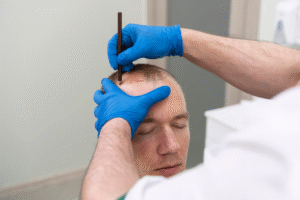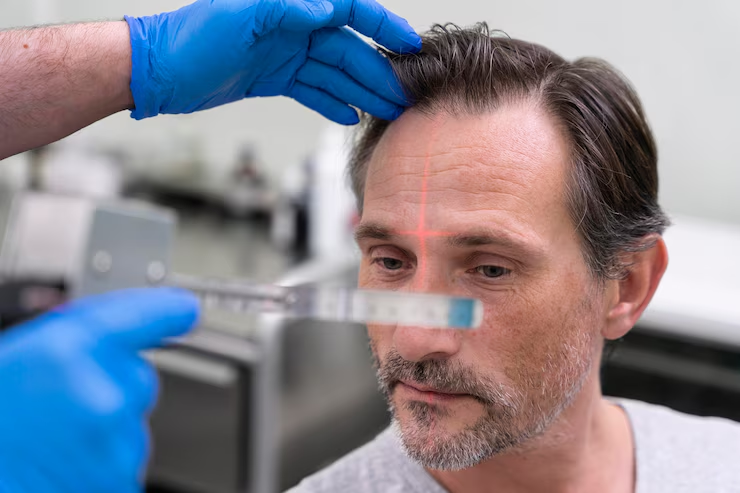Hair loss is a widespread concern among men, with many experiencing thinning or balding as early as their 20s or 30s. While various treatments exist, not all solutions deliver lasting, natural-looking results. One of the most advanced and effective surgical methods available today is the Sapphire hair transplant. This cutting-edge technique has gained popularity for its precision, improved healing, and ability to produce aesthetically pleasing outcomes—especially for men.
In this article, we’ll explore how Sapphire hair transplantation works, why it’s considered a superior solution for men’s hair loss treatment, and what makes it ideal for those seeking reliable and natural restoration.
Understanding Sapphire Hair Transplantation
Sapphire hair transplant refers to the use of sapphire blades—rather than traditional steel—for creating incisions during a hair transplant procedure. These blades are used in Follicular Unit Extraction (FUE), a minimally invasive method where individual hair follicles are extracted from the donor area and implanted into balding or thinning regions.
The sapphire blade, made from a synthetic crystal, allows surgeons to create smaller, finer, and more precise incisions. This not only enhances the placement of grafts but also reduces trauma to the scalp.
Key Benefits of Sapphire Hair Transplants for Men
Enhanced Precision and Density
Sapphire blades enable surgeons to create more closely spaced incisions, which means hair grafts can be implanted at higher densities. This is particularly beneficial for men with advanced hairline recession or crown thinning, where natural-looking density is essential for aesthetic improvement.
The precision of sapphire blades also allows for better angling of grafts, mimicking the natural growth pattern of hair—an important factor in achieving a realistic and undetectable result.
Faster Healing and Less Scarring
Sapphire incisions cause less trauma to the skin compared to steel blades. Because the cuts are narrower and cleaner, the scalp experiences reduced inflammation and heals more quickly. Most men notice that redness and scabbing subside faster, often within a week.
Additionally, this technique minimises the risk of visible scarring, making it ideal for those who want to keep their hair short after the procedure.
Lower Risk of Infection
Sapphire blades are hypoallergenic and antimicrobial, which reduces the risk of infection during and after the transplant. This is especially important for male patients prone to scalp oiliness or who live active lifestyles where sweat buildup can complicate healing.
Improved Comfort During Recovery
Thanks to the minimally invasive nature of Sapphire FUE, most men experience milder discomfort post-procedure. The reduced swelling, irritation, and bleeding contribute to a smoother recovery period, allowing patients to return to daily activities more quickly.
Why Sapphire FUE Is Popular Among Male Patients
Men often seek treatments that not only restore their hair but also require minimal downtime and produce long-term results. Sapphire FUE ticks all the boxes:
- Natural hairline design for frontal recession
- Customised density for top and crown restoration
- High graft survival rate, ensuring transplanted follicles grow effectively
- Discrete scarring, suitable for short hair styles
- Minimal interference with lifestyle, including gym, work, and travel
Moreover, men tend to experience androgenetic alopecia, also known as male pattern baldness, which responds well to surgical techniques like FUE. With the refinement offered by sapphire blades, these procedures now deliver even more impressive results tailored to male hair loss patterns.
Comparing Sapphire FUE with Traditional Hair Transplant Methods
Sapphire FUE vs Standard FUE
The primary difference between Sapphire and traditional FUE lies in the blade used for creating recipient channels. While both use micro-punch tools for extraction, sapphire blades allow for cleaner and denser incisions than the steel ones used in regular FUE.
This leads to:
- Greater control over hair angulation
- Better graft placement
- Faster recovery and lower risk of complications
Sapphire FUE vs FUT (Strip Method)
In contrast to FUT (Follicular Unit Transplantation)—which involves removing a strip of scalp tissue—Sapphire FUE is less invasive. Men often prefer this method as it:
- Avoids a linear scar
- Offers a quicker healing timeline
- Allows them to keep short hairstyles without visible marks
While FUT may still be recommended for those needing large graft numbers, Sapphire FUE offers a more refined approach with excellent aesthetic benefits.
Is Sapphire Hair Transplant Right for You?
Sapphire hair transplant is suitable for most men who:
- Are experiencing male pattern baldness
- Have stable donor hair at the back or sides of the scalp
- Want a minimally invasive option with quick recovery
- Seek a high-density, natural-looking hairline
Your eligibility will be determined by a specialist based on factors such as your hair type, degree of loss, scalp condition, and long-term goals.
Maintenance After a Sapphire Hair Transplant

To maintain results, men should follow a few post-procedure guidelines:
- Avoid direct sun exposure for several weeks
- Refrain from heavy physical activity for 7–10 days
- Use prescribed shampoo and avoid harsh products
- Attend follow-up appointments for scalp checkups
- Adopt a balanced diet to support hair health
Some patients may also consider low-level laser therapy, PRP, or exosome treatments post-transplant to further stimulate follicle strength and longevity.
Conclusion
For men facing hair loss, a Sapphire hair transplant represents one of the most advanced and effective solutions available. It delivers higher precision, improved graft survival, and faster healing—making it ideal for those who want a natural and lasting outcome.
Whether you’re just starting to notice thinning or have been dealing with baldness for years, this refined FUE technique can help restore both your hair and your confidence. If you’re ready to take the next step, consult a reputable clinic that specialises in men hair loss treatment using sapphire technology to discuss your options and develop a personalised plan.

